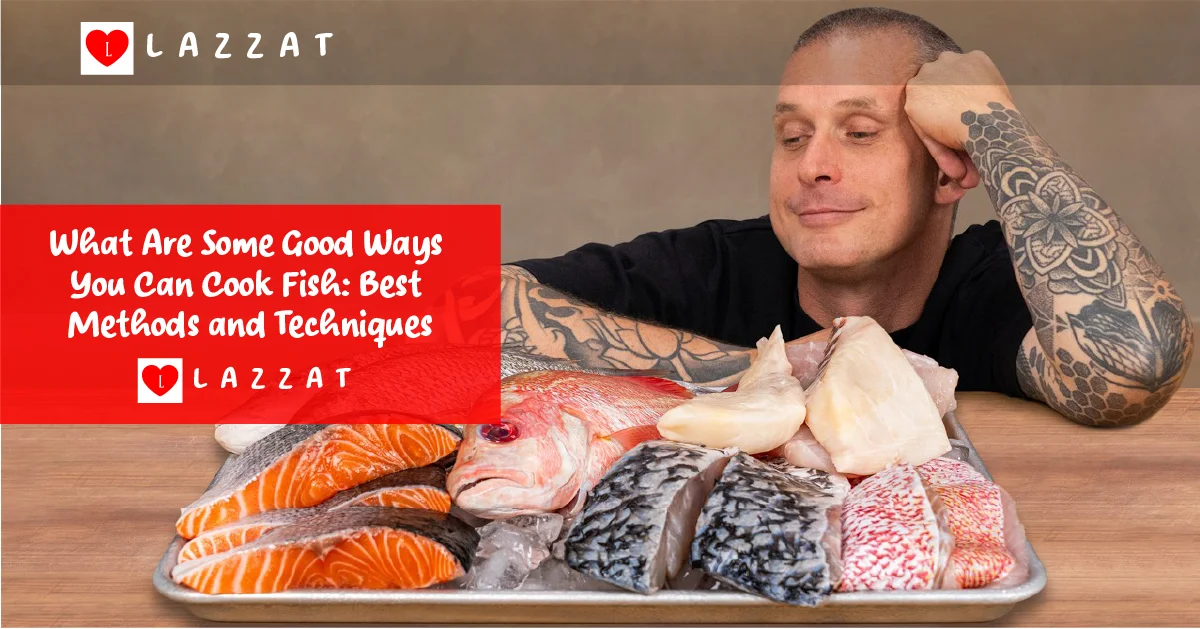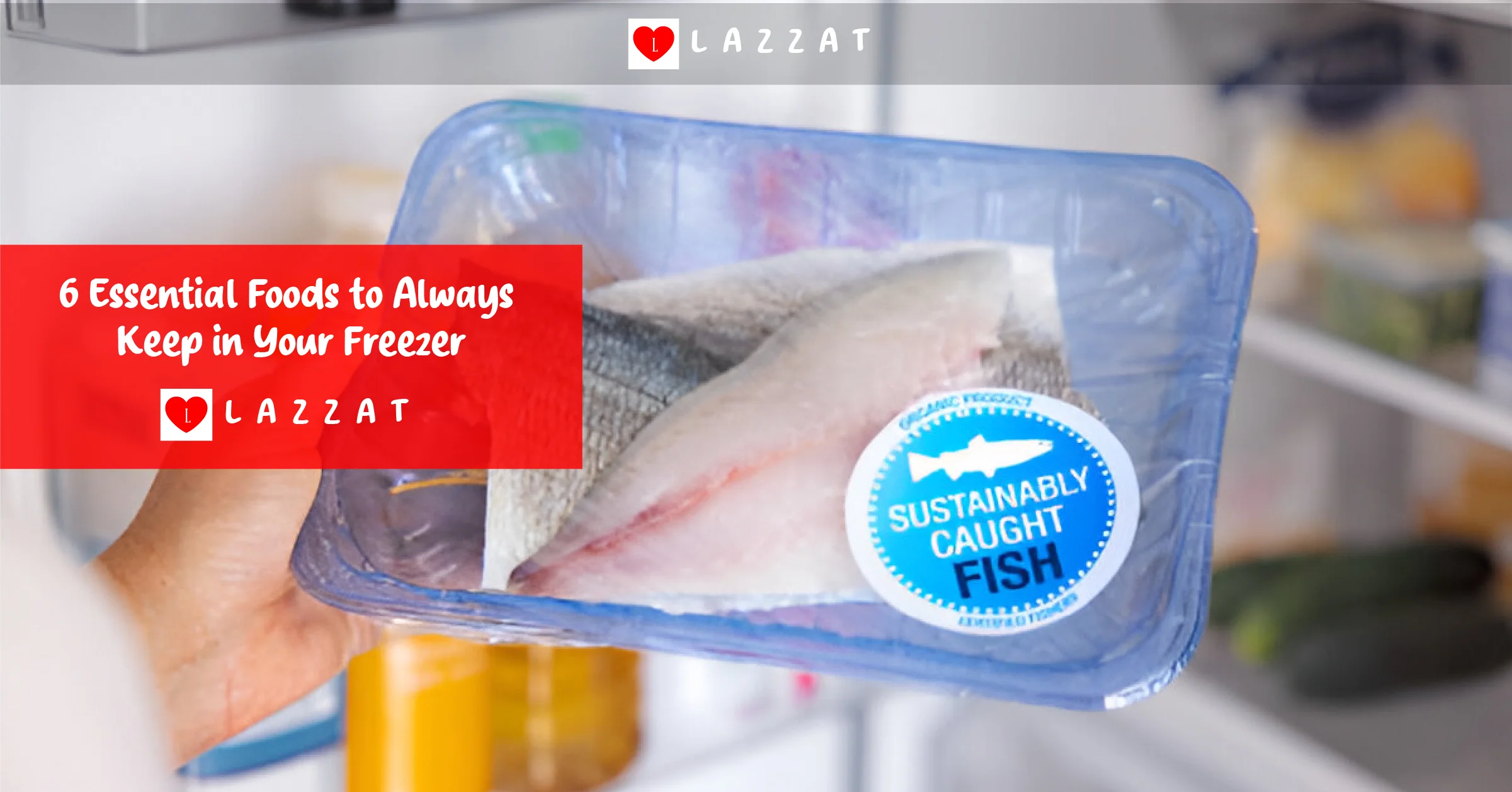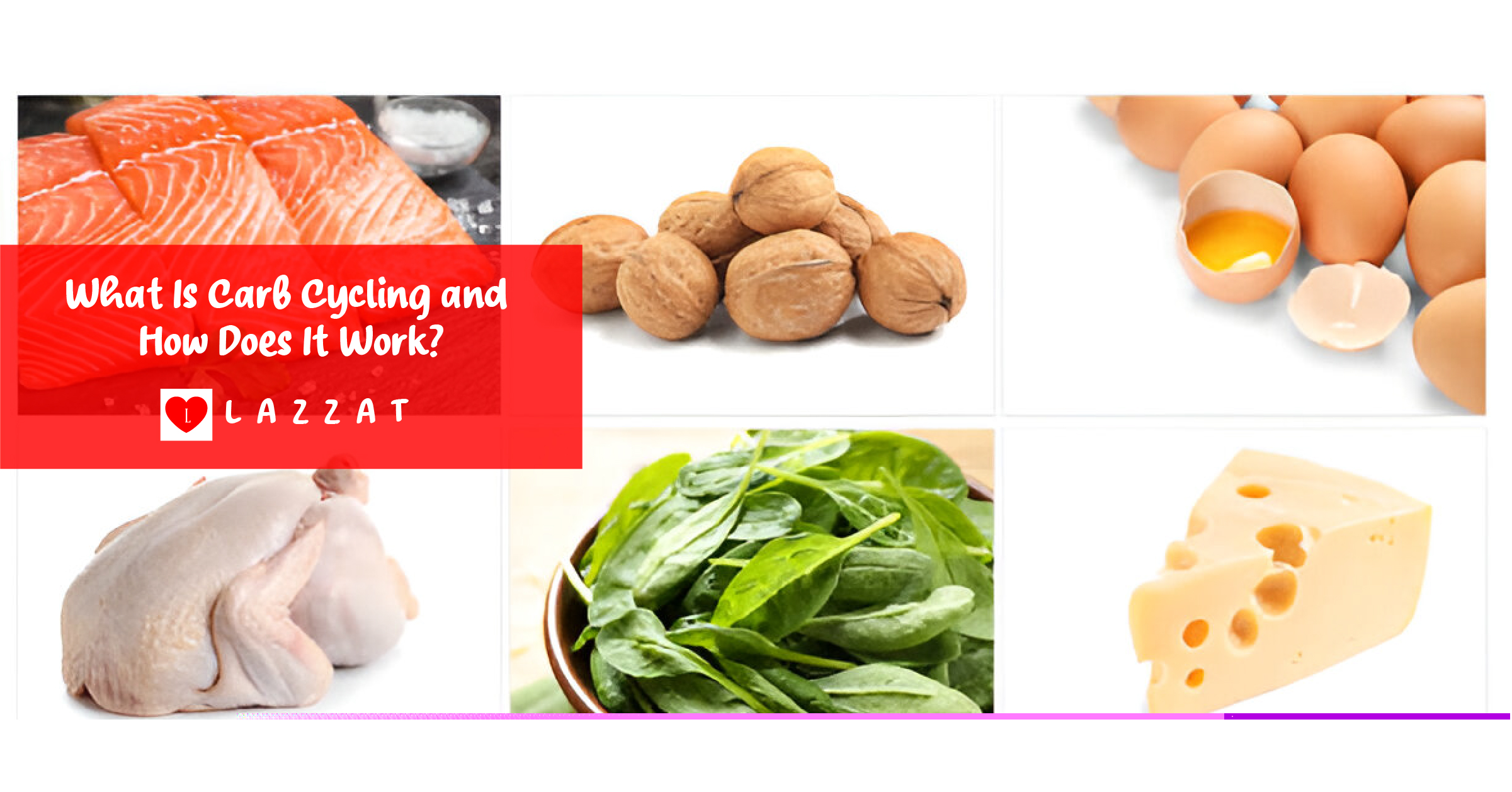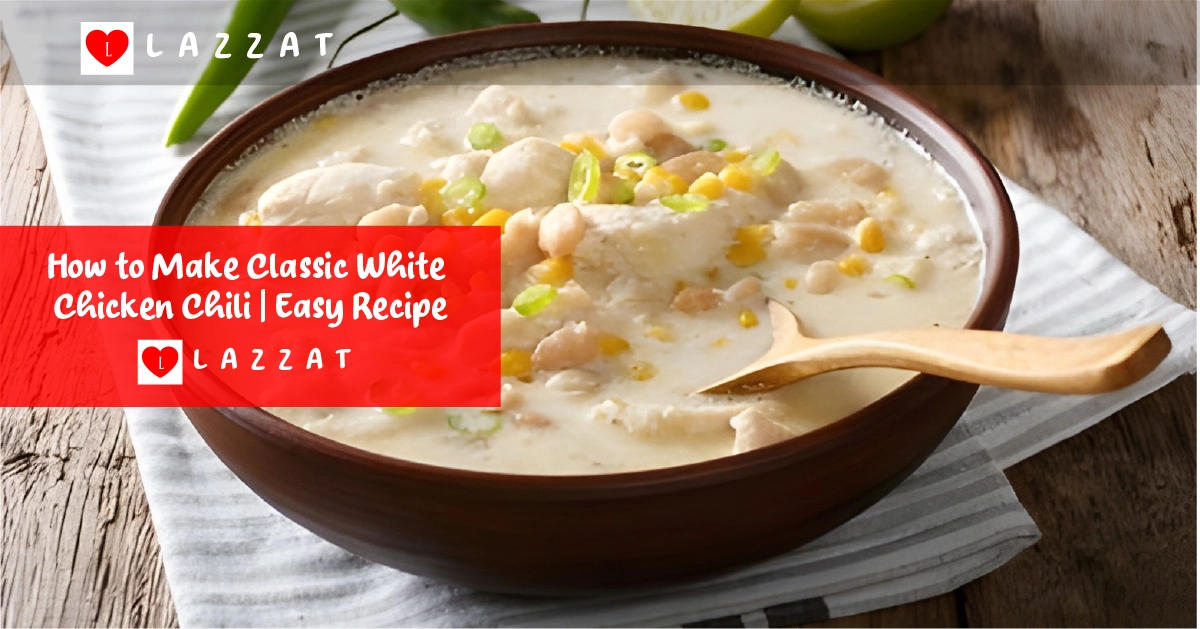As the sun sets, the smell of grilled fish fills the air. It invites you to enjoy a seafood feast. Fishing is a beloved hobby, offering excitement and a tasty meal. But to fully enjoy your catch, learning to cook fish is key.
In this guide, we’ll explore how to cook fish in different ways. You’ll learn from pan-frying to poaching. Each method can turn your fish into a delicious dish. This article is for both seafood lovers and kitchen beginners, aiming to make you a fish-cooking expert.
Table of Contents
Understanding Different Types of Fish and Their Ideal Cooking Methods
When cooking fish, knowing the types and their traits is key. From lean to fatty fish, and fresh to frozen, each has its best cooking ways. These methods enhance their flavors and textures.
Lean Fish vs. Fatty Fish
Lean fish like tilapia, cod, and halibut are low in fat and soft. They’re best for baking, poaching, or light pan-frying. This is because they can dry out quickly with high heat.
Fatty fish, such as salmon, tuna, and mackerel, are rich in omega-3s. They can handle grilling or broiling without drying out.
Fresh vs. Frozen Fish Selection
Choose fresh types of fish for the best taste and texture. But, frozen fish is also good. It’s often frozen quickly to keep its nutrients and quality.
Frozen fish is handy for planning meals ahead.
Fish Texture and Thickness Considerations
The fish’s texture and thickness guide your cooking. Delicate, flaky lean fish need gentle methods like poaching or steaming. Firmer, fatty fish can handle grilling or pan-frying.
Thicker fish cuts need longer cooking than thinner ones.
Understanding fish types helps choose the right cooking methods. This way, you can make your seafood dishes the best they can be.
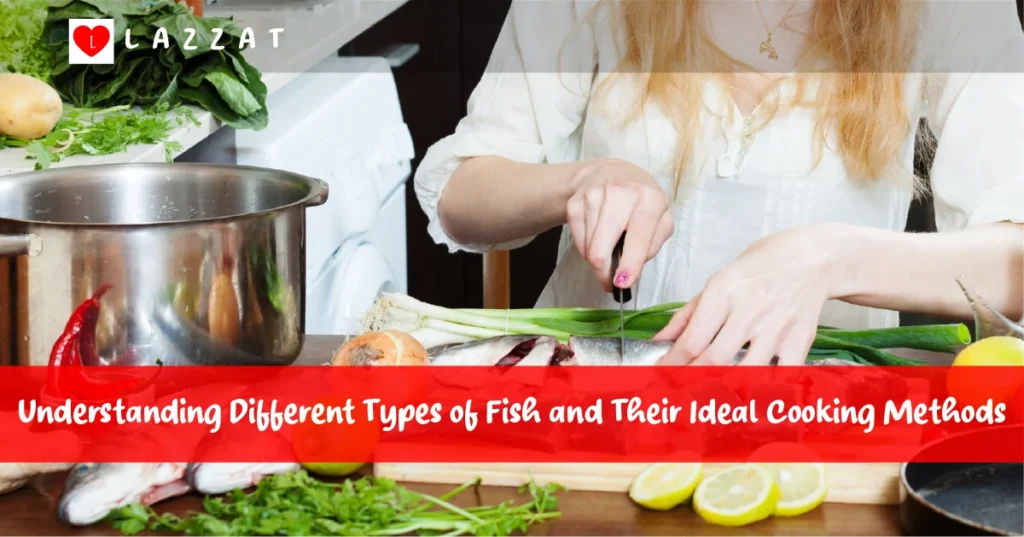
What Are Some Good Ways You Can Cook Fish: An Overview
There are many ways to cook fish, each with its own benefits. You can grill fish for a smoky taste or poach it for a delicate texture. The world of fish cooking is full of flavors and techniques.
Let’s look at some popular ways to cook fish:
- Grilling: Grilling fish adds a smoky flavor and nice grill marks. It’s best for lean fish like tuna or salmon.
- Baking: Baking fish in the oven is healthy and simple. It’s great for thicker fish, keeping it moist and tender.
- Pan-Frying: Pan-frying is quick and versatile. It’s perfect for thin fish, making it crispy on the outside and juicy inside.
- Poaching: Poaching fish in liquid keeps its flavors and texture. It’s good for delicate fish like cod or sole.
- Steaming: Steaming fish is healthy and keeps its nutrients. It’s best for flaky fish like cod or sole.
- Broiling: Broiling fish gives it a flavorful crust while keeping it moist. It’s great for oily fish like mackerel or bluefish.
- Blackening: Blackening coats fish in spices and sears it. It makes a bold, flavorful crust on the fish.
Each cooking fish method has its own benefits. Try different techniques to find your favorites and enhance the taste of your fish.
Mastering the Art of Grilling Fish
Grilling fish is a tasty way to enjoy seafood. It’s great for both seasoned grillers and beginners. We’ll explore grilling fish techniques, marinades, and how to avoid sticking.
Direct vs. Indirect Grilling Techniques
There are two main grilling methods for fish: direct and indirect. Direct grilling places fish over heat, while indirect uses the grill’s edges for a gentler cook. Thinner fish like tilapia do well with direct grilling. Thicker fish, like salmon, are better off with indirect.
Marinades and Seasonings for Grilled Fish
Great-tasting grilled fish starts with the right fish marinades and seasonings. Marinades add flavor and tenderize the fish. Try lemon, garlic, and dill for a classic taste. Or, go bold with teriyaki or Cajun for something different.
Preventing Fish from Sticking to the Grill
Sticking is a common issue when grilling fish. To avoid it, preheat and oil your grill well. Use a fish grilling basket or foil to protect the fish. Gently flip the fish with a spatula to prevent sticking.
| Grilling Technique | Best Fish Varieties | Cooking Time |
|---|---|---|
| Direct Grilling | Tilapia, sole, halibut | 8-12 minutes |
| Indirect Grilling | Salmon, tuna, swordfish | 12-18 minutes |
Learn the details of grilling fish, try new fish marinades, and avoid sticking. You’ll soon be a grilling pro, enjoying delicious fish dishes.
Baking Fish to Perfection
Baking fish in the oven is easy and makes it moist and tasty. Whether you’re making a classic recipe or trying something new, learning to bake fish is exciting. It opens up a world of tasty dishes.
The en papillote (in parchment) method is popular. It wraps the fish in parchment or foil. This keeps the fish moist and adds flavor from herbs, spices, lemon, or white wine.
When baking fish, the right temperature and time are key. Bake at 400°F (200°C) for 12-18 minutes, depending on the fish’s thickness. Use a food thermometer to check for an internal temperature of 145°F (63°C).
To make your fish taste better, marinate it in olive oil, lemon juice, and herbs. This adds flavor and keeps the fish moist.
You can also try roasting or broiling fish. Roasting at 425°F (220°C) gives a caramelized crust. Broiling adds a smoky flavor.
Whatever method you choose, focus on the fish’s texture and flakiness. Mastering fish baking lets you create delicious, healthy dishes. These will impress everyone.
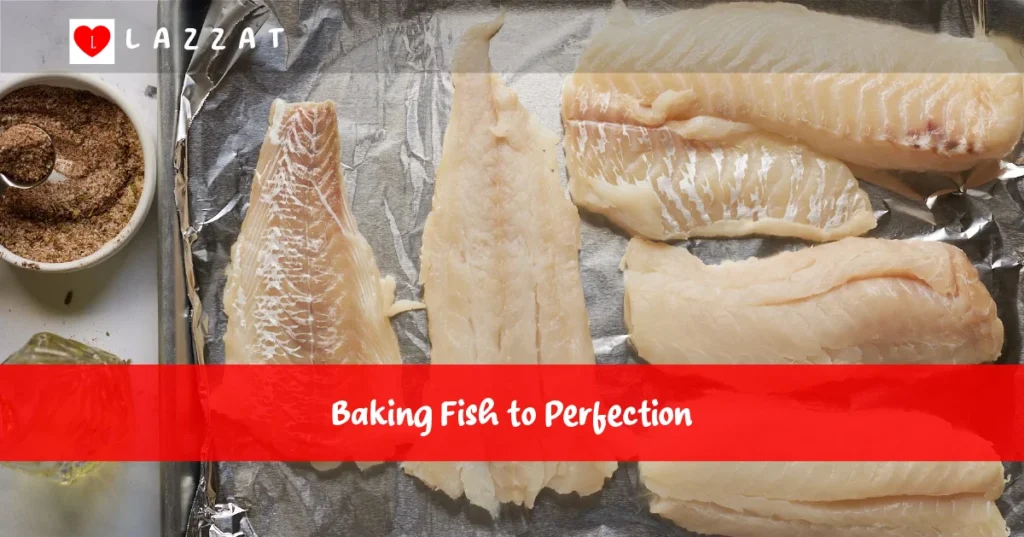
Essential Tips for Pan-Frying Fish
Pan-frying fish is a tasty and versatile cooking method. It works well with both lean white fish and fatty salmon. Here are some key tips to help you pan-fry fish perfectly every time.
Choosing the Right Oil and Temperature
Choosing the right oil and temperature is crucial for pan-frying. Use oils like avocado, grapeseed, or refined olive oil. These oils handle high heat well without burning or adding bad flavors. Keep the oil between 350°F and 375°F for the best results.
Proper Coating Techniques
Coating the fish with a light breading or flour makes it crispy. First, pat the fish dry with paper towels. Then, lightly coat it with seasoned flour or panko breadcrumbs. Be gentle to avoid a greasy texture. Try different fish coating techniques to find your favorite.
Pan-Frying Time Guidelines
- Thin fillets (1/2 inch or less): 2-3 minutes per side
- Thicker fillets (1 inch or more): 4-6 minutes per side
- Whole fish or steaks: 5-8 minutes per side, depending on thickness
Always watch the fish while it’s frying. It should be opaque and flaky when done. Make sure the internal temperature reaches 145°F for safety.
Poaching Fish: A Healthy Cooking Method
Poaching fish is a great way to cook it. It keeps the fish’s natural flavors and soft texture. Poaching fish means cooking it in a flavorful liquid at a low simmer. This way, the fish cooks evenly without drying out.
Poaching is good for healthy fish cooking. It uses little to no extra fat. You can add herbs, spices, and aromatics to the liquid for extra flavor. This method also keeps more nutrients in the fish, making it a healthy choice.
- Ideal poaching liquids include court bouillon, white wine, vegetable or seafood broth, or a simple combination of water and lemon juice.
- Lean, delicate fish like tilapia, cod, and halibut are well-suited for poaching, as their flaky texture holds up beautifully to the gentle cooking process.
- To infuse maximum flavor, consider adding fresh herbs, sliced citrus, peppercorns, or other aromatic ingredients to the poaching liquid.
Learning to poach fish lets you make a healthy, tasty dish. It’s also pretty to look at. Serve poached fish with fresh veggies, whole grains, and light sauces for a well-rounded meal.
Steaming Fish: Preserving Natural Flavors
Steaming fish is a great way to keep its natural flavors and nutrients. This method cooks the fish gently, making it tender and juicy. You can try traditional steaming or the en papillote technique.
Traditional Steaming vs. En Papillote Method
Traditional steaming uses a steamer basket over simmering water. It cooks the fish with steam, making it delicate and flavorful. The en papillote method wraps the fish in parchment or foil. This traps steam and infuses the fish with herbs and spices.
Best Seasonings for Steamed Fish
Steaming steaming fish lets its natural flavors shine. But, you can also add seasonings to enhance the taste. Here are some great options:
- Fresh herbs like dill, parsley, or cilantro
- Lemon or lime juice for a citrusy note
- Garlic, ginger, or shallots for savory flavor
- White wine or vegetable broth for moisture and flavor
- Soy sauce or miso paste for umami
Whether you choose traditional steaming fish or en papillote, steaming is a great way to enjoy fish. It preserves the fish’s natural flavors and nutrients.
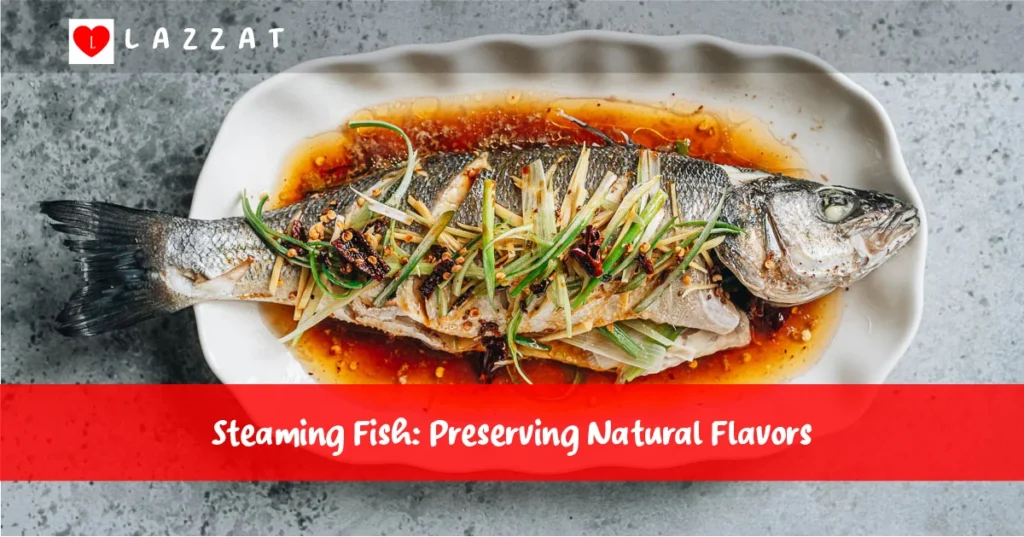
Broiling Fish: Quick and Flavorful Results
Broiling fish is a great way to cook quickly and deliciously. It turns simple broiling fish into a tasty dish. It’s perfect for a fast weeknight dinner or a special weekend meal.
Broiling fish cooks fast because of the high heat. It browns the outside while keeping the inside juicy. This makes it ideal for quick fish recipes when you’re short on time.
Selecting the Right Fish for Broiling
Not all fish is good for broiling fish. Look for firm, flaky fish like:
- Salmon
- Tuna
- Swordfish
- Halibut
- Tilapia
These fish handle broiling well without drying out. Choose fresh or high-quality frozen fillets for the best taste.
Preparing for Broiling
When broiling fish, it’s important to place it right. Put the fish on a foil-lined baking sheet or broiler pan. Place the rack 4-6 inches from the broiler. This helps the outside cook fast while keeping the inside moist.
Think about adding a marinade or rub to your broiling fish. Lemon juice, herbs, and spices can make the fish taste better and create a tasty crust.
“Broiling fish is a game-changer for quick and easy meals. The high heat seals in the juices, while giving you a beautifully crisp exterior.”
With the right fish and a few simple steps, you can become a pro at broiling fish. Enjoy quick fish recipes that are both healthy and full of flavor.
Blackening Fish: Creating a Flavorful Crust
Blackening fish is a cooking method that coats fish in spices and sears it at high heat. This creates a tasty, caramelized crust. It brings out the fish’s natural flavors and adds a bold Cajun twist to seafood dishes.
Selecting the Right Spice Blend
The spice blend is key to blackening success. A classic Cajun seasoning mix has paprika, garlic powder, onion powder, cayenne pepper, black pepper, and oregano. Try different mixes to find the perfect flavor for your fish.
Temperature Control Tips
Controlling the temperature is important when blackening fish. Use a heavy-duty skillet and heat it to 400-450°F (204-232°C). This hot surface sears the fish and creates the blackened crust. Adjust cooking time based on fish thickness for the right doneness.
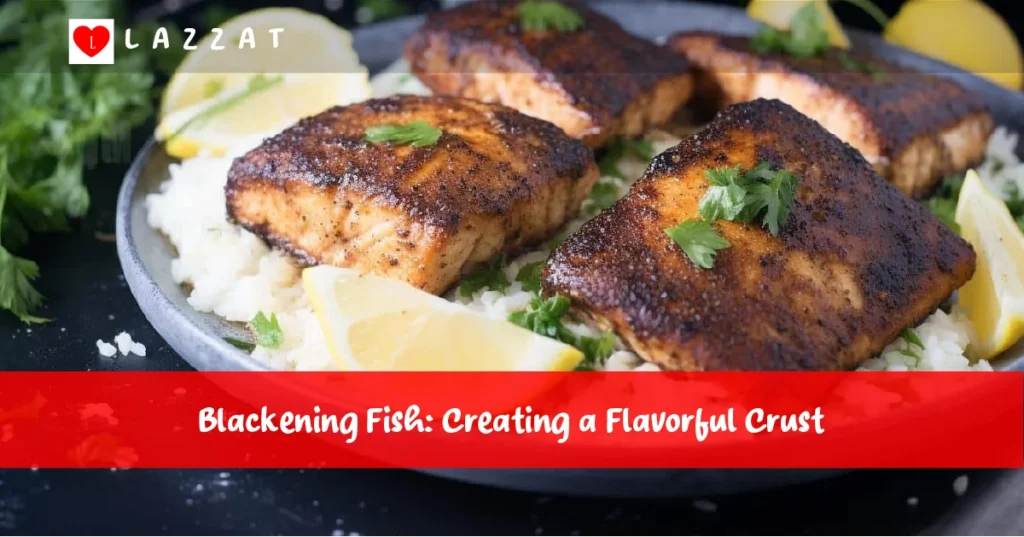
Also Read:
FAQs
What is the best way to cook a delicate fish like sole?
Delicate fish like sole are best cooked using gentle methods like poaching or steaming. These methods help preserve the fish’s tender texture and subtle flavor.
How can I prevent fish from sticking to the grill?
To prevent fish from sticking to the grill, ensure it’s well-oiled and preheated. Consider using a fish grilling basket or marinating the fish in a flavorful liquid before grilling.
What’s the best way to cook a thick piece of salmon?
Thick cuts of salmon are ideal for grilling or baking. These methods allow for even cooking and help maintain the fish’s moistness.
Can I reuse marinade on fish after cooking?
It’s generally not recommended to reuse marinade that has been in contact with raw fish. To safely use the marinade as a sauce, boil it for at least 5 minutes to kill any harmful bacteria.
What are some healthy ways to cook fish?
Healthy cooking methods for fish include baking, steaming, and poaching. These techniques minimize the need for added oils and fats, preserving the fish’s natural nutrients.

